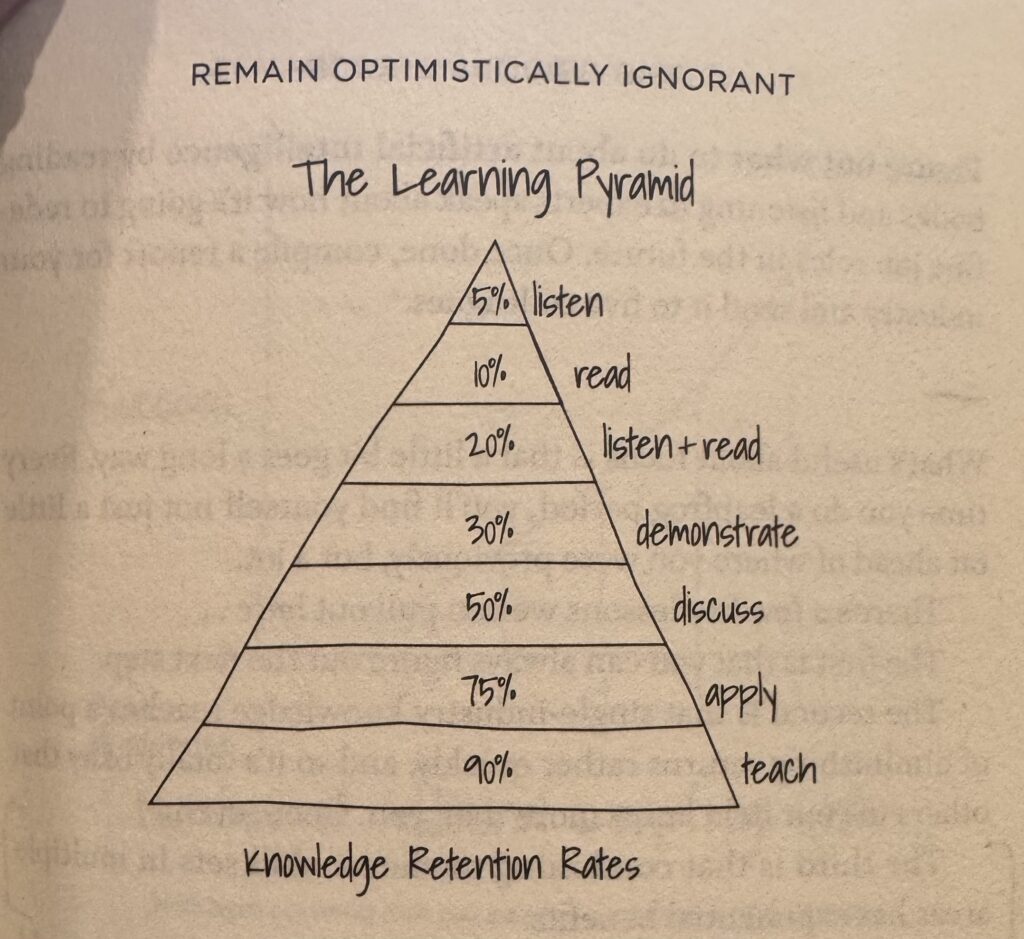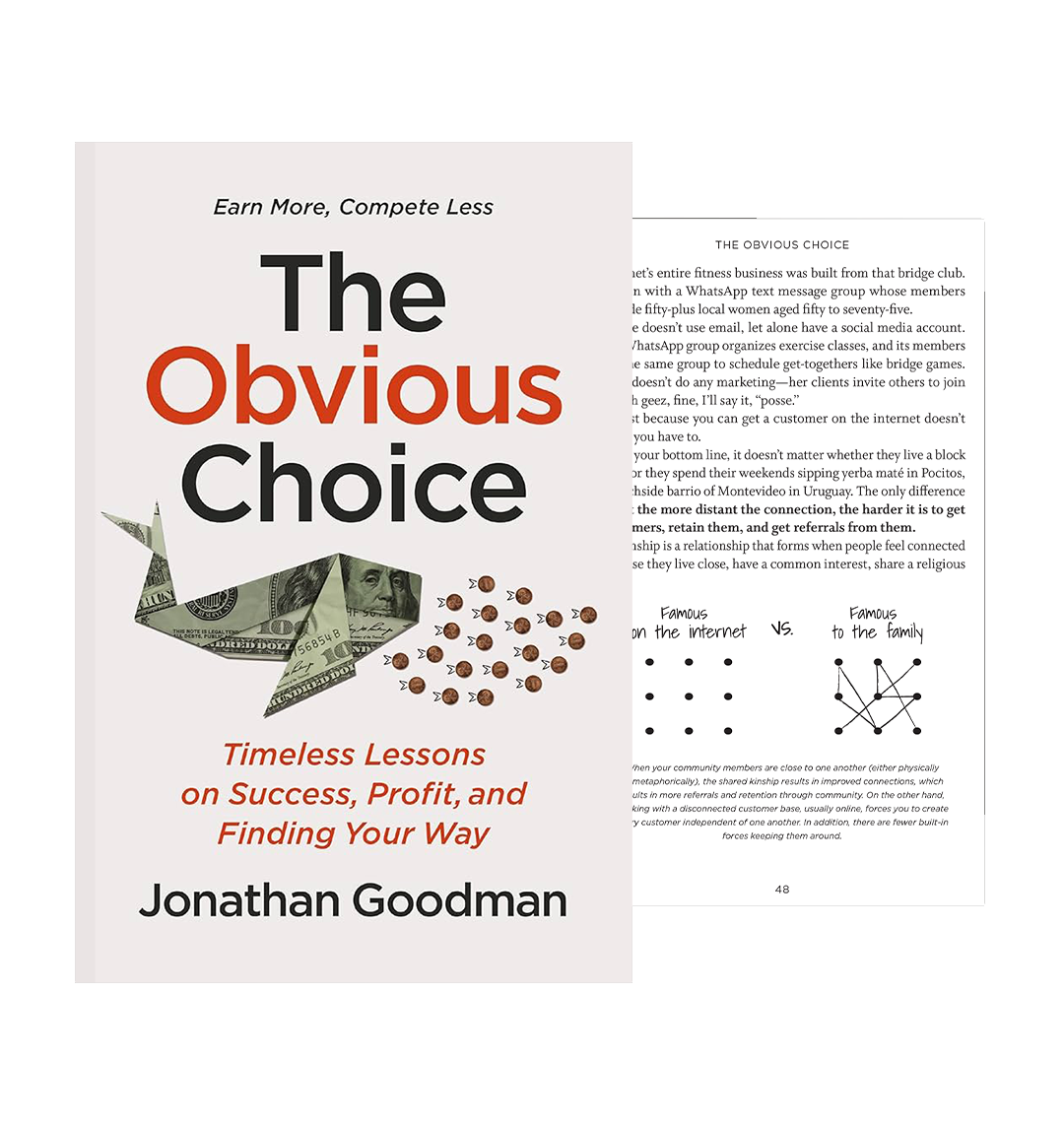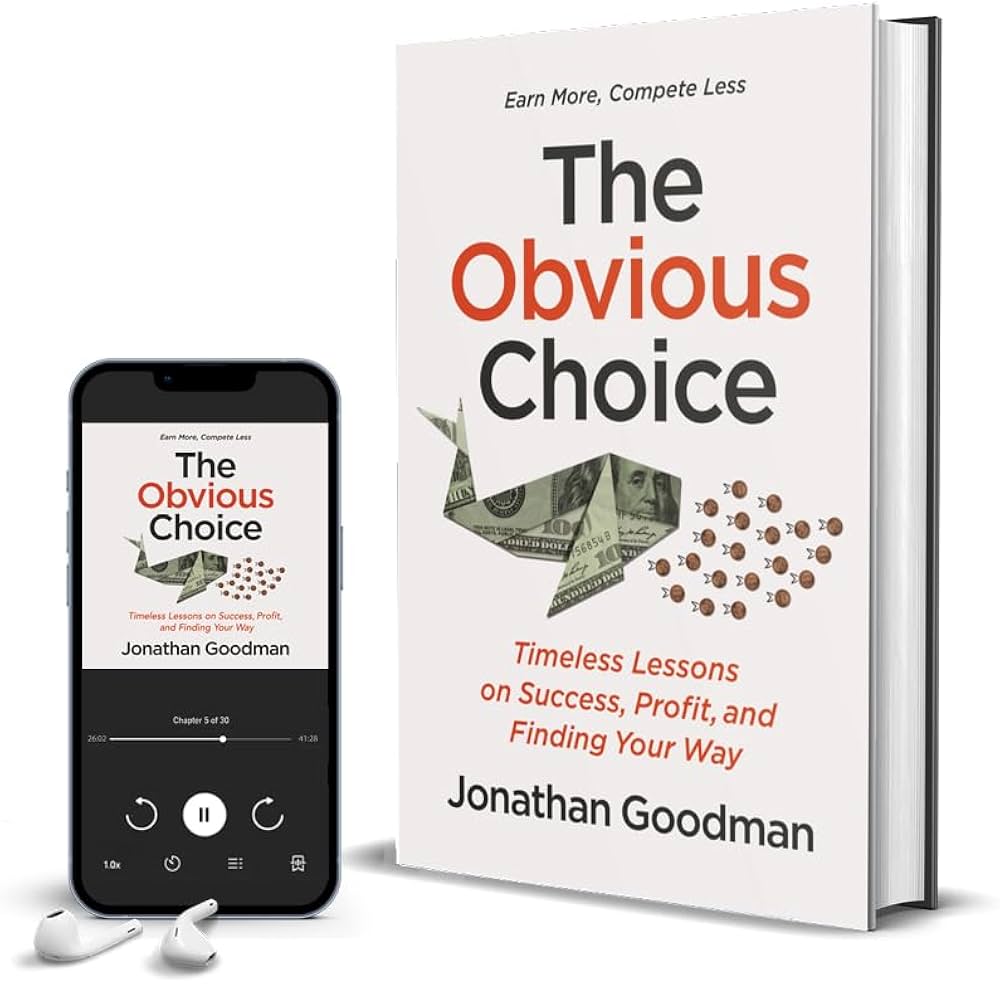(This article is 1,010 words long and takes about 8 minutes to read.)
This is a slightly edited excerpt from The Obvious Choice: Timeless Lessons on Success, Profit, and Finding Your Way
Industry specific knowledge reaches the point of diminishing returns rather quickly.
Take me, for example.
I was a highly successful personal trainer with a basically okay knowledge of fitness and a decent understanding of psychology.
But what I also had that most people in my industry didn’t was a mediocre ability to write and sell.
If you were to assess my talent in any of those things independent of one another, I’d be low to mid-tier. The combination of skills was rare and, as a result, my market value increased dramatically.
Flash forward to today and I’d consider myself to be a good writer who also happens to have a solid all-around business background, decent understanding of psychology, and mediocre skill sets in money management, public speaking, and product development.
- There are better writers,
- more experienced business people, and
- better psychologists.
Improving a good-enough industry skill set results in small, incremental benefits. Call it 1 + 1 = 2.
When you begin adding outside skills, growth becomes exponential. 1 + 1 doesn’t equal 2 anymore, it equals 10. That’s obviously not an accurate calculation, but it’s a useful simplification.
That's because your value rarely relies on expertise, but in range.
You can try very hard to become truly great at one thing.
Or
You can combine multiple skills.
Both strategies work. The advantages of combining skills is that they can be learned quickly, because none of them need to be high-level or depend on extraordinary talent. The versatility they bring can also help you adapt to an evolving world.
Not all skills are created equal. Juggling knives is cool. So is domesticating feral kittens. But those won’t help you much. Unless you do them at the same time. I’d pay to watch that.
Why Leapfrog Skills are Key to Career Success
Leapfrog Skills are timeless. Advancements in technology might make them easier to implement but won’t render them less valuable.
Leapfrog Skills are also transferable. They can be combined with any industry expertise to make you more valuable. With them, you’ll have an advantage in any entrepreneurial venture or become indispensable to your employer, allowing you to command a higher salary. If you change industries, you’ll take them with you.
These are the top five Leapfrog Skills.
1. Business writing: Get to the point. Hook the reader. Tell a story. Write simply. Offer an actionable takeaway.
2. Behavioral psychology: Recognize, navigate, and take ethical advantage of the major cognitive biases.
3. Conversation: Ask the types of questions that encourage others to talk about themselves.
4. Sales: You get what you want by helping others get what they want.
5. Wealth management: Make money with money. With patience, even a little bit of money is enough money to make meaningful money.
The following is a good guideline for how the most successful people in their fields focus their professional development over time.
Year 1: 75% industry skills / 25% Leapfrog Skills
Year 2: 50% industry skills / 50% Leapfrog Skills
Year 3 onward: 25% industry skills / 75% Leapfrog Skills
Industries have different baseline levels of knowledge required for results. Your ratio might be different, but even if it is, it’s probably not by much.
Leapfrog Learning: How to Learn Faster
Focus is the key to skill acquisition in a world determined to distract us.
Nothing’s new about that advice. You hear it all the time. Focus more. The art of focus.” The secret to success is to be more focused,” they say.
Well, how do you decide on your focus? Then, how do you stay focused?
Your answer is Leapfrog Learning. It has two parts:
- Sixty-day focused sprints
- Teach
Why sixty days?
It’s long enough to develop a mediocre level of skill yet short enough to feel doable.
Once you learn a skill, having it becomes your new normal. Like building muscles or riding a bike, if you don’t use it for a while it’ll get rusty but come back quickly.
Now onto the second part of Leapfrog Learning: teaching it.
A lot of work these days includes listening and reading. That’s where most people stop.
Teaching helps you retain more than 90 percent of what you’re learning as opposed to listening and reading, which generally sits around 20 percent knowledge retention rates. These numbers aren’t scientific. Whether they’re technically accurate or not isn’t as important as the pattern: Teaching is the best way to learn and retain what you learn.

Taken from Chapter 7 of the book The Obvious Choice
Here’s three examples of Leapfrog Learning:
Get better at social media by choosing one platform to master, listening to podcasts, reading blog posts, and studying the top accounts. After sixty days, build a slide deck, invite three friends over, feed them pizza (without pineapple. Pineapple on pizza is gross), and present what you’ve learned.
Build your personal wealth management philosophy by studying topics like greed and envy, interviewing financial advisors, reading books about investing, and listening to case studies where knowledgeable people share honestly what they do with their own money. After sixty days, teach a loved one about your philosophy or record a podcast episode about it. (I did this.)
Figure out what to do about artificial intelligence by reading books and listening to experts speak about how it’s going to redefine job roles in the future. Once done, compile a report for your industry and send it to five colleagues. (I also did this.)
What’s useful about focus is that a little bit goes a long way. Every time you do a leapfrog period, you’ll find yourself not just a little bit ahead of where you were previously, but a lot.
I developed the Leapfrog Learning framework to give me permission to go all-in for a short period, get good enough at a thing, recognize the point of diminishing returns, and confidently move on to the next. And I hope that it helps you too.
-Jon










